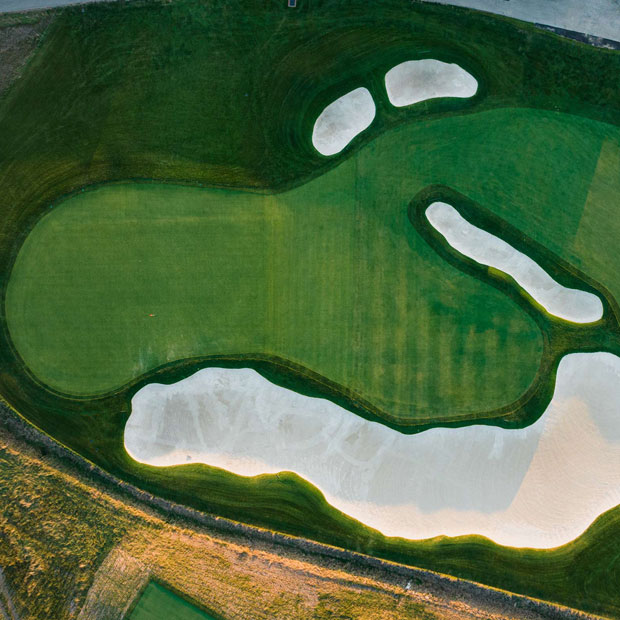Praying for Wind
How wind would reveal the brilliance of Royal Portrush's design


Royal Portrush is magnificent. The Northern Irish Harry Colt masterpiece has been a hit among players and fans, and for good reason. The course will quickly ascend to the top of the list of most desirable Open sites alongside the Old Course and Muirfield. Despite a lack of the course’s key ingredient, wind, Portrush is identifying the players at the top of their games. Those slightly off find themselves stuck in neutral, scrambling for pars. It’s the rare links course that can stand up to the world’s best players without any help from the elements.
The Dunluce Links conducts a full examination of the best players’ abilities because of how Harry Colt used the outstanding topography to create challenge. Players see few, if any, “stock shots,” as the rumpled ground offers level lies only rarely. In addition to these micro-contours, the Portrush property has bold and distinct elevation changes, which allowed Colt to create stunning green sites in dunes and valleys. This dramatic topography is rare for a rota course and adds a layer of challenge. Players have to confront visual intimidation and gauge how the large-scale uphill and downhill slopes influence the greens.
When it comes to the greens, Royal Portrush benefits from having been built later than most Open courses, when construction practices had advanced. The greens are complex yet cohesive, rare for an Open venue. Many have exterior contours that repel poor or over-aggressive shots away. But these larger contours can mask the brilliance of what’s going in the interior of the greens. These subtler and smaller contours separate the good from the great putters.
These design traits allow Royal Portrush to shine in the absence of the Open Championship’s secret sauce, weather. Even in benign conditions, the fakers get exposed. A player without the utmost confidence in his swing won’t be able to answer complex tactical questions and pull off the shots required. He will look at, say, the 163-yard approach with the ball three inches above his feet to an elevated green with a pin tucked right, and think, “I probably can’t hit that precise of a cut.”
In this way, the Dunluce Links reveals the players who can think and execute; it sheds light on the artists and casts shadows over the Trackman heroes. It’s why midway through round two we are seeing the best ball-strikers rise to the top and those who just don’t have it this week hang on for dear life.
The table is set for a wonderful weekend of golf at the Open. As good as Royal Portrush’s return has been, however, it remains one element away from perfection: a little wind. Right now a large group of elite players has gathered around the lead. Throw in a 20-mph breeze—a common thing in Northern Ireland—and the course’s design features would really start working. Players with their A+ games would immediately separate from those with their A- stuff. They would have to consider a few extra factors on each shot. Their discussions with caddies would have to focus more on wind direction, trajectory, and spin. Ultimately, wind would identify the player who can hit a hold-off fade 5-iron from a hook lie to an elevated green into a hefty, hurting right-to-left wind. Golf nirvana.
So golf gods, if you’re listening, consider this my prayer for wind to complete Royal Portrush’s triumphant return to championship golf. If it comes, it will leave no question as to who deserves the title of Champion Golfer of the Year.
Leave a comment or start a discussion
Engage in our content with thousands of other Fried Egg Golf Members
Engage in our content with thousands of other Fried Egg Golf Members
Get full access to exclusive benefits from Fried Egg Golf
- Member-only content
- Community discussions forums
- Member-only experiences and early access to events





.webp)





Leave a comment or start a discussion
Lorem ipsum dolor sit amet, consectetur adipiscing elit. Suspendisse varius enim in eros elementum tristique. Duis cursus, mi quis viverra ornare, eros dolor interdum nulla, ut commodo diam libero vitae erat. Aenean faucibus nibh et justo cursus id rutrum lorem imperdiet. Nunc ut sem vitae risus tristique posuere. uis cursus, mi quis viverra ornare, eros dolor interdum nulla, ut commodo diam libero vitae erat. Aenean faucibus nibh et justo cursus id rutrum lorem imperdiet. Nunc ut sem vitae risus tristique posuere.